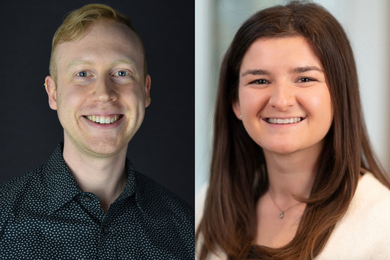Cambridge, MA--As millions count down to the New Year this December 31st, astronomers and other scientists and individuals who depend on precise time will be adding an extra second to their countdown. "The International Earth Rotation Service (IERS) has added this "leap second" to account for the difference between atomic time and people's perception of time based on the rotation of the Earth," said Thomas Herring, Associate Professor of Geophysics at Massachusetts Institute of Technology.
The time change can cause all sorts of confusion in time-sensitive equipment that runs around the clock, said Herring. In particular, radio astronomers working that night and others who use precise navigation like the Global Positioning Strategy can have trouble. "Someone depending on GPS could end up 300 kilometers off in that one second if they weren't coordinated with their position on the ground," he said.
Official time is kept in about 20 places in the world by using the accurate measurement of the oscillation of a cesium atom. While this measurement remains constant, our older measurement of time, the rotation of the Earth is changing--slowing down--according to Herring. "As a result, every 6-18 months we need to add one second to keep time in synchronization. If we didn't make the adjustment, the sun would appear to rise earlier and earlier."
The last time adjustment was made on June 30, 1994 and prior to that on June 30, 1993.
"We've known since the 1800s that the Earth's rotation has been slowing down due to loss of frictional energy from the ocean's tides," said Herring. "It slows down at irregular intervals because of fluctuations in motions of the Earth's atmosphere and because of differences in movement between the fluid core and the solid Earth."
In the United States, the US Naval Observatory is the keeper of time. The December 31st time change will occur at 2359:59 Greenwich Mean Time, rendering the completely accurate count for this New Year as 10, 9, 8, 7, 6, 5, 4, 3, 2, 1, 1.





